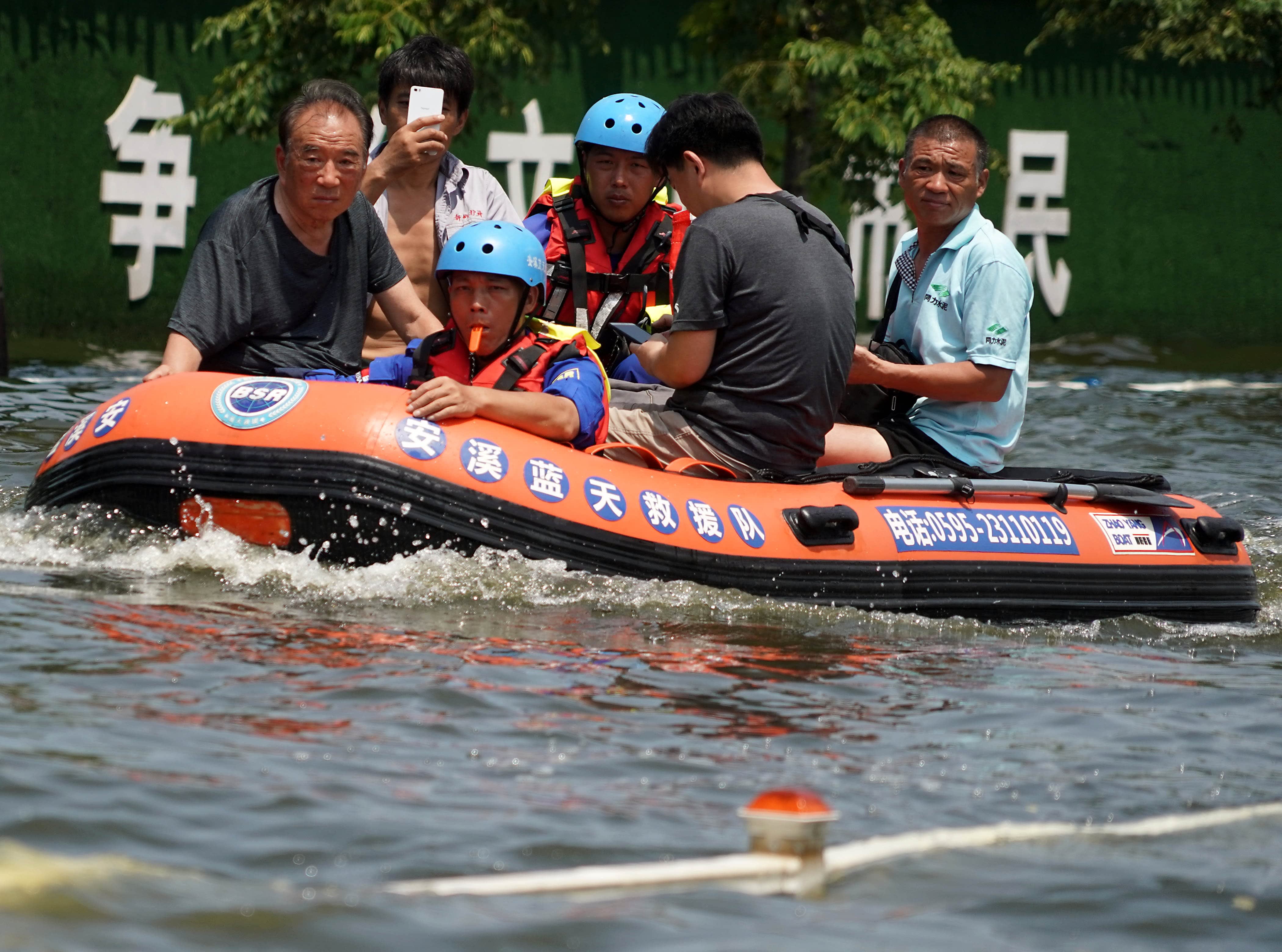The flooding in the central Chinese province of Henan last year not only exacted a heavy human toll, it was also the costliest in Asia-Pacific in 2021, according to one insurer.
The extreme weather event exposed the enormity of Asia’s lack of insurance protection against the rising severity of climate change related disasters, compared to the rest of the world.
“China is a market where the insurance gap is very large or underinsurance is very high,” said Ernst Rauch, chief climate and geo scientist at Munich Re Group.
“Last year’s costliest natural disaster in Asia was the Henan floods with an overall loss of $16.5 billion, of which only 10% were insured,” he told CNBC in an email.
In early January, the Germany-based insurance giant released a report, which showed “Asia Pacific as a region lags with a large insurance gap of 83% against the global average of 57%.” It estimated that the region saw overall economic losses of $50 billion in 2021, of which only $9 billion were insured.
The insurance gap refers to the difference in protection coverage between economic losses brought about by natural disasters and insured losses.
The second costliest disaster in Asia was the 7.1-magnitude earthquake off the east coast of Japan in February last year, which incurred huge losses of $7.7 billion, according to estimates by Munich Re. The insured loss was just $2.3 billion, creating an insurance gap of 70%, the report said.
Rising risks for insurers
Most of Asia is exposed mainly to typhoons and flooding, said Kelvin Kwok, an analyst at Moody’s Investors Service.
“The increasing severity of such catastrophes are pressuring insurers and reinsurers to better manage the associated risks,” he said.
China is a market where the insurance gap is very large or underinsurance is very highErnst RauchMunich Re Group
“This could strain insurers’ profitability and capitalization if they fail to acquire sufficient reinsurance protection or factor in the potential loss deterioration within their product pricing,” he said.
Data from Swiss Re showed that “insured losses from natural disasters rose to around $80 billion in 2020 from around $50 billion in 2019,” Kwok added.
With natural disasters occurring more frequently in the region, insurers have seen a notable increase in the number and size of claims in relation to changes in climate patterns, according to Siew Wai Wan, senior director of Asia-Pacific Insurance at Fitch Ratings.
“Insurers’ operating stability highly depends on whether they are capable of managing the climate risk in a proper and effective way,” he said.
Factors driving the gap
One of the main reasons behind the problem of underinsuring against natural catastrophes in Asia is a lack of awareness around the value of insurance.
“Communities, financial institutions and governments may not be as familiar with the benefits of insurance,” said Rauch from Munich Re. As a result, they’re unaware insurance can help “stabilize an individual or a country’s development of wealth by smoothing out economic shocks,” he said.
Low insurance penetration in some developing markets is another factor. That’s mostly constrained by low disposal income levels in those countries.
“For instance, Chinese insurers covered only around 10% of economic losses arising from the Yangtze River flooding in 2020, compared with around 30%-40% for natural disasters in the West,” Moody’s Kwok said.
Alternative sources of capital like insurance-linked securities and catastrophe bonds are also less prevalent in Asia compared to the West.
“This partially restricts the supply of capital to underwrite catastrophe risks in Asia,” he added.
Growth prospects
Given the scale of the problem, insurers play a crucial role in bridging the region’s protection gap, analysts said.
“Many businesses and households could be financially devastated by natural disasters. Insuring against these risks would ensure that when disasters strike, insurance communities could accelerate loss recoveries,” said Fitch’s Wan.
He said the long-term growth prospects of Asia’s insurance markets “remain favorable” given lower insurance penetration rates and “steady economic expansion.”
Strong government support is also critical in driving growth and to deal with the challenge, said Rauch.
Through public-private partnerships, governments can work closely “with insurers to tailor protection schemes… to mobilize disaster relief funds as well as mitigate fiscal volatility resulting from shock events,” he said.
